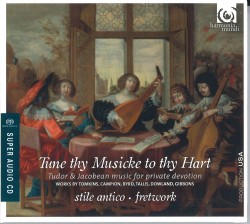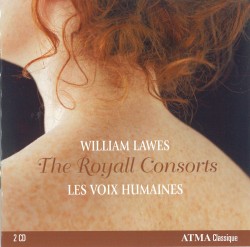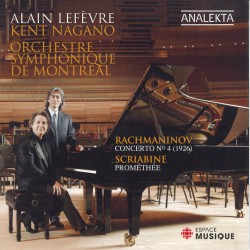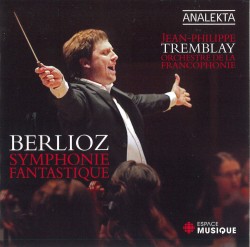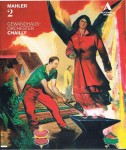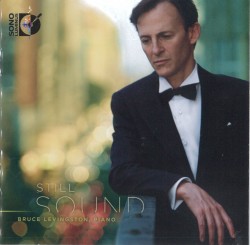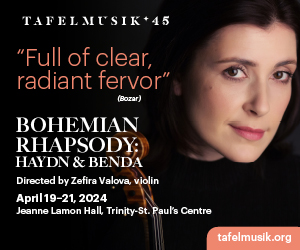Strings Attached - July 2012
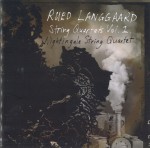 The Danish composer Rued Langgaard (1893–1952) is a new name to me, but if the music on String Quartets Vol.1 (DACAPO 6.220575) is anything to go by then I’ve really been missing something. Denmark’s Nightingale String Quartet is simply superb in this first volume of a series of all nine quartets by a composer described in the excellent booklet notes as an eccentric outsider who was virtually ignored by the Danish musical establishment in his lifetime. The works are essentially in the late romantic style, but mixed with a startling modernity: listen to Train Passing By, the short second movement of String Quartet No.2, written in 1918 and revised in 1931, and you could swear you were listening to two minutes of Philip Glass or Steve Reich; the following slow movement, Landscape in Twilight, is a simply beautiful pastoral episode. The String Quartet No.3 from 1924, the quite lovely single-movement String Quartet No.6 from 1918 (Langgaard’s numbering system is quite confusing!) and the variations on the chorale melody Mig hjertelig nu laenges complete a revelationary CD.
The Danish composer Rued Langgaard (1893–1952) is a new name to me, but if the music on String Quartets Vol.1 (DACAPO 6.220575) is anything to go by then I’ve really been missing something. Denmark’s Nightingale String Quartet is simply superb in this first volume of a series of all nine quartets by a composer described in the excellent booklet notes as an eccentric outsider who was virtually ignored by the Danish musical establishment in his lifetime. The works are essentially in the late romantic style, but mixed with a startling modernity: listen to Train Passing By, the short second movement of String Quartet No.2, written in 1918 and revised in 1931, and you could swear you were listening to two minutes of Philip Glass or Steve Reich; the following slow movement, Landscape in Twilight, is a simply beautiful pastoral episode. The String Quartet No.3 from 1924, the quite lovely single-movement String Quartet No.6 from 1918 (Langgaard’s numbering system is quite confusing!) and the variations on the chorale melody Mig hjertelig nu laenges complete a revelationary CD.
Beautifully recorded at the Royal Danish Academy of Music and issued on Denmark’s national record label, these performances are as close to definitive as you can get. Wonderful stuff, and I can’t wait to hear the rest of the series.
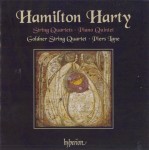 The chamber music of the Irish composer Sir Herbert Hamilton Harty (1879–1941) is featured on the 2-CD set Hamilton Harty String Quartets & Piano Quintet, performed by Australia’s Goldner String Quartet and pianist Piers Lane (Hyperion CDA67927). Dating from the opening years of the 20th century, all three works — the String Quartets in F Major (1900) and A Minor (1902) and the Piano Quintet in F Major (1904, revised 1906) — are virtually unknown today, the second string quartet and the piano quintet apparently remaining unheard from the year of their premieres until the present recording. Like so much British music of the period, these are highly competent and really lovely works, given absolutely beautiful performances here. There are the expected hints of Mendelssohn and Brahms, but it’s Harty’s love of Russian music that seems to predominate, particularly with the echoes of Borodin in the quartets. The faultless recording quality and the excellent booklet notes make this a very attractive set.
The chamber music of the Irish composer Sir Herbert Hamilton Harty (1879–1941) is featured on the 2-CD set Hamilton Harty String Quartets & Piano Quintet, performed by Australia’s Goldner String Quartet and pianist Piers Lane (Hyperion CDA67927). Dating from the opening years of the 20th century, all three works — the String Quartets in F Major (1900) and A Minor (1902) and the Piano Quintet in F Major (1904, revised 1906) — are virtually unknown today, the second string quartet and the piano quintet apparently remaining unheard from the year of their premieres until the present recording. Like so much British music of the period, these are highly competent and really lovely works, given absolutely beautiful performances here. There are the expected hints of Mendelssohn and Brahms, but it’s Harty’s love of Russian music that seems to predominate, particularly with the echoes of Borodin in the quartets. The faultless recording quality and the excellent booklet notes make this a very attractive set.
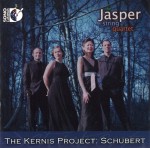 The Jasper String Quartet is back with another volume in their excellent series of string quartets by the American composer Aaron Jay Kernis, this time pairing Kernis’ String Quartet No. 1 “Musica Celestis” from 1990 with Schubert’s “Death and the Maiden” quartet in The Kernis Project: Schubert (Sono Luminus DSL-92152). I enthusiastically reviewed the earlier volume pairing a Kernis quartet with a Beethoven quartet some time ago, and have no hesitation in being just as enthusiastic this time around. The performances are top-notch, and the recording quality is equally good. If you don’t know this series, then you’re really missing something; apart from anything else, it is all the proof you could ever need that there are contemporary composers adding magnificent and significant works to the string quartet repertoire.
The Jasper String Quartet is back with another volume in their excellent series of string quartets by the American composer Aaron Jay Kernis, this time pairing Kernis’ String Quartet No. 1 “Musica Celestis” from 1990 with Schubert’s “Death and the Maiden” quartet in The Kernis Project: Schubert (Sono Luminus DSL-92152). I enthusiastically reviewed the earlier volume pairing a Kernis quartet with a Beethoven quartet some time ago, and have no hesitation in being just as enthusiastic this time around. The performances are top-notch, and the recording quality is equally good. If you don’t know this series, then you’re really missing something; apart from anything else, it is all the proof you could ever need that there are contemporary composers adding magnificent and significant works to the string quartet repertoire.
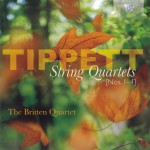 The Brilliant Classics label lives up to its name once again with a 2-CD reissue of the excellent 1990 recordings by The Britten Quartet of the String Quartets Nos. 1-4 by the English composer Sir Michael Tippett (2CD 9257). Tippett’s life (1905–1998) spanned almost the entire 20th century, and his quartets come from both ends of his creative career: Quartets Nos.1-3 are from 1934–1946; Quartet No.4 was written in 1977–78. The composer’s early obsession with Beethoven’s quartets can be discerned, but it is Tippett’s characteristic emphasis on line and counterpoint — especially in the earlier quartets — that stands out.
The Brilliant Classics label lives up to its name once again with a 2-CD reissue of the excellent 1990 recordings by The Britten Quartet of the String Quartets Nos. 1-4 by the English composer Sir Michael Tippett (2CD 9257). Tippett’s life (1905–1998) spanned almost the entire 20th century, and his quartets come from both ends of his creative career: Quartets Nos.1-3 are from 1934–1946; Quartet No.4 was written in 1977–78. The composer’s early obsession with Beethoven’s quartets can be discerned, but it is Tippett’s characteristic emphasis on line and counterpoint — especially in the earlier quartets — that stands out.
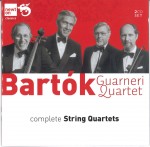 The six string quartets of Bela Bartók comprise arguably the most significant series in that genre since the Beethoven quartets, and the Dutch mid-price label Newton Classics, distributed here by Naxos, has reissued a 2-CD set of Bartók: String Quartets Nos.1-6 in the 1975 recordings by the Guarneri Quartet originally issued by Sony (8802111). The Guarneri Quartet was in top form in these performances of works which span Bartók’s entire career, and the set — especially at the price — can be recommended without reservation. The original recording and transfers are all excellent.
The six string quartets of Bela Bartók comprise arguably the most significant series in that genre since the Beethoven quartets, and the Dutch mid-price label Newton Classics, distributed here by Naxos, has reissued a 2-CD set of Bartók: String Quartets Nos.1-6 in the 1975 recordings by the Guarneri Quartet originally issued by Sony (8802111). The Guarneri Quartet was in top form in these performances of works which span Bartók’s entire career, and the set — especially at the price — can be recommended without reservation. The original recording and transfers are all excellent.


